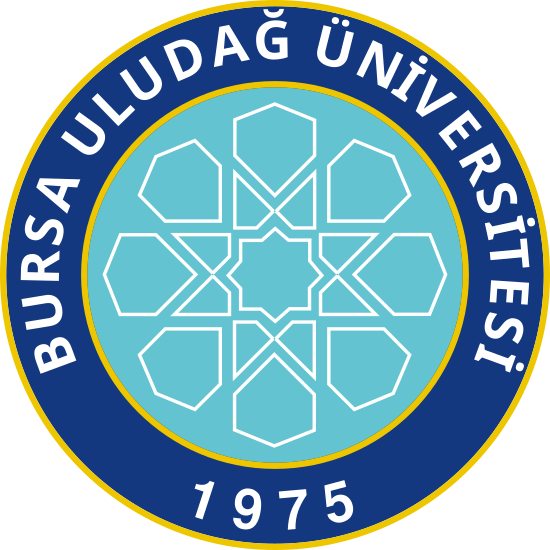Bu öğeden alıntı yapmak, öğeye bağlanmak için bu tanımlayıcıyı kullanınız:
http://hdl.handle.net/11452/20423Tüm üstveri kaydı
| Dublin Core Alanı | Değer | Dil |
|---|---|---|
| dc.date.accessioned | 2021-06-14T11:39:16Z | - |
| dc.date.available | 2021-06-14T11:39:16Z | - |
| dc.date.issued | 1986 | - |
| dc.identifier.citation | Akay, R. (1986). "Bursa'da ipek üretimi ve mekânsal yapı". Uludağ Üniversitesi İktisadi ve İdari Bilimler Fakültesi Dergisi, 7(2), 169-175. | tr_TR |
| dc.identifier.uri | http://hdl.handle.net/11452/20423 | - |
| dc.description.abstract | Bursa'nın mekansal gelişimi içinde ilk Osmanlı başkenti oluşu ve ipek üretimi; 14 ve 19. yy.lar arasında önem kazanmaktadır. Osmanlı başkenti olduğu dönemde, padişahların inşa ettirdiği külliyeler mekansal gelişme basamağı olmuştur. Yıldırım ve Muradiye semtleri bu tür gelişmenin çarpıcı örnekleridir. İpek üretimi kentin mekansal yapısını özellikle; üretimde mekanizasyonun başladığı 19. yy. ikinci yarısında etkileyerek kentin doğuda Gökdere, batıda Cilimboz vadilerine yönelmesine yol açmıştır, İpek üretim teknolojisinde suyun kullanımı fabrikaların su kenarların da yapılmasının önemli nedenlerinden biridir. Tarihsel bir geçmişi olan ipek üretimi, günümüzde farklı üretim birimlerinde varlığını sürdürmektedir. Fabrika ve imalathanelerden oluşan birimlerde; ipek ipliği elde edilmesi -büküm - dokuma-boya, apre süreçleri yapılmaktadır. Ancak ipek üretimi mekansal yapıda etkileyici olma özelliğini yitirmiştir. | tr_TR |
| dc.description.abstract | In the spatial development of Bursa; her being the first capital city of Ottomans and silk production have an important effect in between 14 th - 19 th centuries. In the Ottoman period; complexes which were builded by the Ottoman Soul tans, functioned as an inertia in the spatial development. Silk production affected the spatial structure mostly in the mechanization of the proccess that; the city developed to the banks of Gökdere and Cilim boz. The water technology that is used in the production, forced factories to estoblish by the water sources. Silk production which has an historical background is processed under the roofs of different workshops and factories with the processes of reeling-curling - weaving - finishing and dying. Hovewer, it has no effect on the spatial structure of the city. | en_US |
| dc.language.iso | tr | tr_TR |
| dc.publisher | Uludağ Üniversitesi | tr_TR |
| dc.rights | info:eu-repo/semantics/openAccess | en_US |
| dc.rights | Atıf 4.0 Uluslararası | tr_TR |
| dc.rights.uri | http://creativecommons.org/licenses/by/4.0/ | * |
| dc.subject | Bursa | tr_TR |
| dc.subject | İpek üretimi | tr_TR |
| dc.subject | Silk production | en_US |
| dc.subject | Mekansal yapı | tr_TR |
| dc.subject | Spatial structure | en_US |
| dc.title | Bursa'da ipek üretimi ve mekansal yapı | tr_TR |
| dc.title.alternative | Silk production process and spatial structure in bursa | en_US |
| dc.type | Article | en_US |
| dc.relation.publicationcategory | Makale - Ulusal Hakemli Dergi | tr_TR |
| dc.contributor.department | Uludağ Üniversitesi/İktisadi ve İdari Bilimler Fakültesi. | tr_TR |
| dc.identifier.startpage | 169 | tr_TR |
| dc.identifier.endpage | 175 | tr_TR |
| dc.identifier.volume | 7 | tr_TR |
| dc.identifier.issue | 2 | tr_TR |
| dc.relation.journal | Uludağ Üniversitesi İktisadi ve İdari Bilimler Fakültesi Dergisi | tr_TR |
| dc.contributor.buuauthor | Akay, Rana | - |
| Koleksiyonlarda Görünür: | 1986 Cilt 7 Sayı 2 | |
Bu öğenin dosyaları:
| Dosya | Açıklama | Boyut | Biçim | |
|---|---|---|---|---|
| 7_2_20.pdf | 2.02 MB | Adobe PDF |  Göster/Aç |
Bu öğe kapsamında lisanslı Creative Commons License

